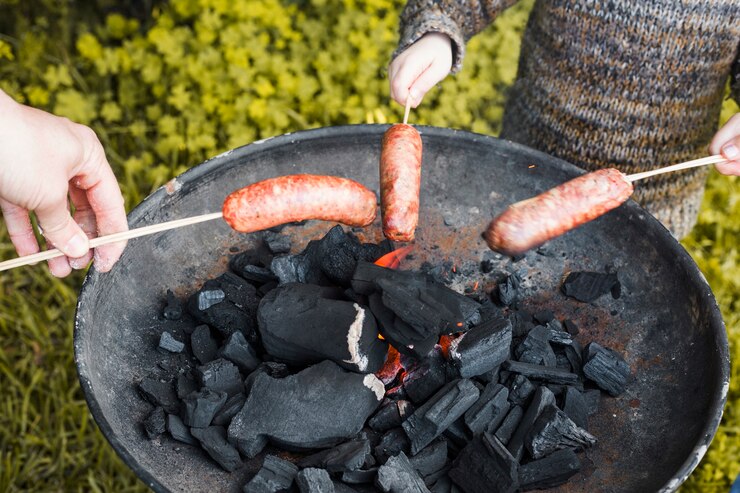Introduction
Lava rock is one of nature’s most intriguing materials, formed from the molten lava ejected during volcanic eruptions. It is not just a fascinating geological phenomenon but also a versatile material with a myriad of uses. From landscaping to construction, and even in barbecue grills, lava rock plays a crucial role in various aspects of our lives. Let’s dive into the mysterious and multifaceted world of lava rock.
The Formation of Lava Rock
Lava rock originates from the fiery depths of the earth. When a volcano erupts, molten lava is expelled and flows down its sides. As the lava cools, it solidifies into various types of rock. This cooling process can happen rapidly or slowly, leading to the formation of different textures and types of lava rocks.
Types of Lava Rock
Lava rock can be broadly categorized into three types based on its formation and texture: basalt, pumice, and scoria. Each type has unique characteristics and uses.
Basalt
Basalt is a dense, fine-grained lava rocks. It is dark in color, usually black or gray, and is formed from rapidly cooling lava. Basalt is often used in construction due to its durability.
Pumice
Pumice is a light, porous volcanic rock that forms from frothy lava that cools rapidly. It is known for its abrasive properties and is commonly used in beauty and cleaning products.
Scoria
Scoria is a highly vesicular, dark-colored volcanic rock that typically has a reddish or black hue. It is often used in landscaping and as a drainage medium due to its lightweight and porous nature.
Physical Characteristics
Texture and Porosity
The texture of lava rocks can range from smooth and glassy to rough and porous. The porosity of lava rocks is due to the gas bubbles trapped within the rocks as it cools and solidifies. This feature makes lava rocks highly effective in applications like filtration and soil aeration.
Color Variations
Lava rocks comes in a variety of colors, including black, gray, red, and brown. The color often depends on the mineral composition and the oxidation state of the iron within the rock.
Geographical Distribution
Major Lava Rock Locations
Lava rock is found in regions with active or dormant volcanoes. Some of the major lava rocks locations include Hawaii, Iceland, Italy, and the Pacific Ring of Fire.
Lava Rocks Around the World
Different regions around the world boast unique lava rocks formations. For example, the basalt columns of the Giant’s Causeway in Northern Ireland and the black sand beaches of Hawaii are both formed from lava rocks.
Uses of Lava Rock
In Landscaping
Lava rocks is a popular choice in landscaping due to its aesthetic appeal and functional benefits. It helps with soil aeration, retains moisture, and adds a decorative element to gardens and pathways.
In Construction
Lava rock’s strength and durability make it an excellent material for construction. It is often used in the building of roads, retaining walls, and as an aggregate in concrete.
In Filtration Systems
Lava rock’s porous nature makes it an ideal medium for filtration systems. It is used in water filtration and purification processes, helping to remove impurities and improve water quality.
In Barbecue Grills
Lava rocks is commonly used in barbecue grills for its excellent heat retention and distribution properties. It also adds a smoky flavor to the food, enhancing the overall grilling experience.
Lava Rock in Landscaping
Benefits
Using lava rocks in landscaping offers numerous benefits. It is low-maintenance, long-lasting, and helps with weed control. Additionally, its ability to retain moisture reduces the need for frequent watering.
Design Ideas
Lava rocks can be used in various landscaping designs, from creating striking garden borders to being used as mulch. It can also be incorporated into rock gardens, water features, and as a decorative ground cover.
Lava Rock in Construction
Strength and Durability
Lava rock’s inherent strength and durability make it a reliable material for construction projects. Its resistance to weathering and erosion ensures long-lasting structures.
Examples of Use
Examples of lava rocks in construction include its use in road base materials, as an aggregate in lightweight concrete, and in the building of retaining walls and embankments.
Lava Rock for Filtration
How It Works
Lava rock’s porous nature allows it to trap impurities and contaminants as water passes through it. This makes it an effective medium for both water and air filtration systems.
Advantages Over Other Materials
Compared to other filtration materials, lava rocks is more sustainable and has a longer lifespan. It also provides better filtration efficiency due to its high surface area and porosity.
Lava Rock in Barbecue Grills
Heat Retention
Lava rock’s ability to retain and distribute heat evenly makes it ideal for barbecue grills. It helps maintain a consistent cooking temperature, ensuring perfectly grilled food.
Flavor Enhancement
Cooking over lava rocks adds a unique smoky flavor to food. The porous rock absorbs and radiates the heat, enhancing the taste and texture of grilled dishes.
Environmental Impact
Sustainability
Lava rocks is a naturally occurring material, making it a sustainable choice for various applications. Its use reduces the need for synthetic materials, which often have a larger environmental footprint.
Environmental Benefits
Using lava rocks in gardening and landscaping can improve soil health by promoting better aeration and moisture retention. It also helps reduce soil erosion and provides a habitat for beneficial microorganisms.
Cultural Significance
Historical Uses
Historically, lava rocks has been used by various cultures for building, tool-making, and as a trade commodity. Its durability and availability made it a valuable resource.
Symbolism in Different Cultures
Lava rocks holds symbolic meanings in different cultures. In Hawaiian culture, for example, it is considered sacred and is often associated with the goddess Pele, the deity of volcanoes.
Collecting Lava Rock
Tips for Collectors
When collecting lava rocks, it’s important to research the legalities and regulations of the area. Always collect responsibly and avoid taking rocks from protected sites.
Ethical Considerations
Consider the environmental impact and cultural significance of lava rocks before collecting. Ensure that your collection practices do not harm the natural landscape or disrespect cultural beliefs.
Maintaining and Cleaning Lava Rock
Cleaning Techniques
To clean lava rocks, simply rinse it with water to remove dirt and debris. For deeper cleaning, use a mild detergent and a brush to scrub away any buildup.
Longevity Tips
To ensure the longevity of lava rocks, regularly inspect it for any signs of wear or damage. Replace any broken pieces to maintain its effectiveness and aesthetic appeal.
Conclusion
Lava rock is truly a marvel of nature, with its formation rooted in the earth’s fiery depths. Its unique characteristics and versatility make it valuable in various applications, from landscaping and construction to filtration and cooking. By understanding and appreciating lava rocks, we can better utilize this natural resource in sustainable and innovative ways.
FAQs
What is lava rock used for in gardening?
Lava rock is used in gardening for soil aeration, moisture retention, and as a decorative ground cover. It also helps control weeds and reduces the need for frequent watering.
How does lava rock enhance grilling?
Lava rock retains and distributes heat evenly, providing a consistent cooking temperature. It also adds a smoky flavor to grilled food, enhancing its taste and texture.
Can lava rock be used in water filtration systems?
Yes, lava rock’s porous nature makes it an effective medium for water filtration. It traps impurities and improves water quality.
Where can you find lava rock?
Lava rock is commonly found in regions with active or dormant volcanoes, such as Hawaii, Iceland, and Italy.
How do you clean lava rock?
To clean lava rock, rinse it with water to remove dirt and debris. For deeper cleaning, use a mild detergent and a brush to scrub away any buildup.







